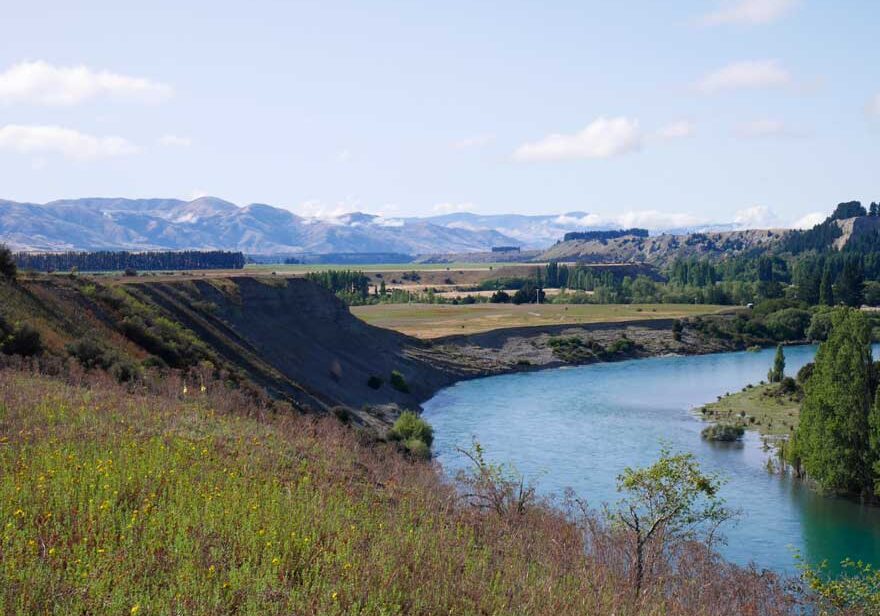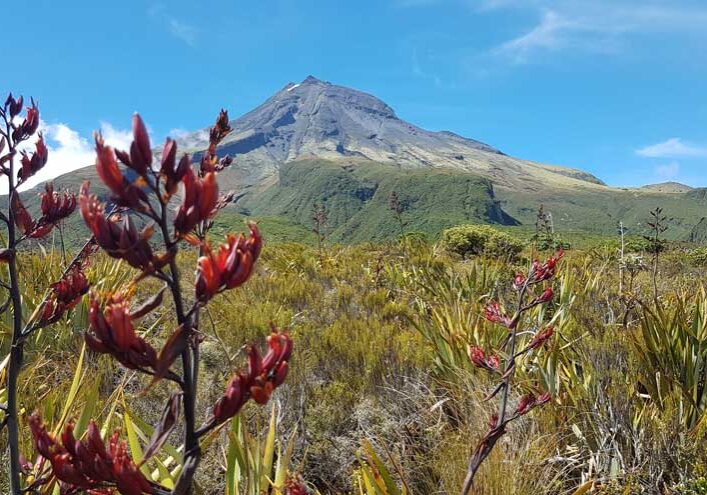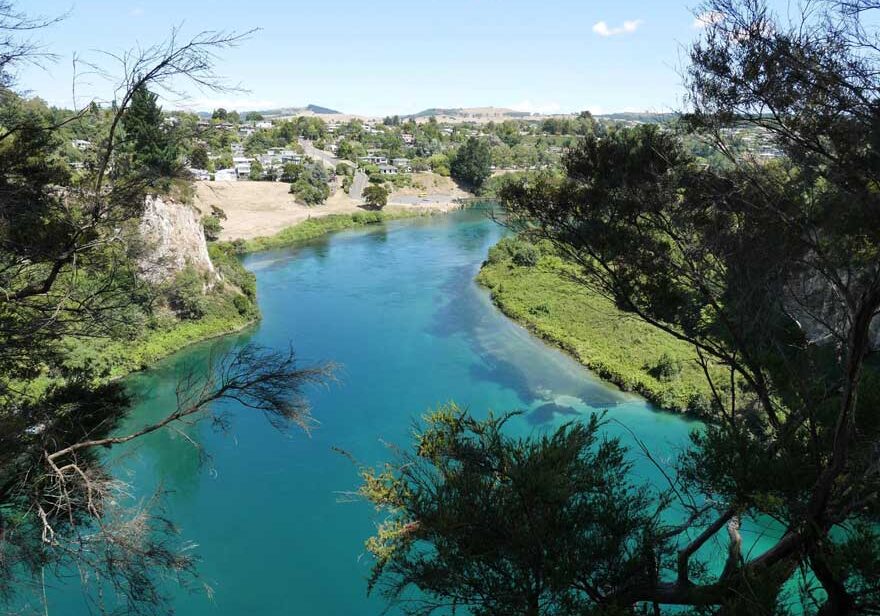Anthropogenic geomorphology
Ecological Baselines for river, floodplain, and lake restoration: from Traditional to Molecular Approaches
Professor Antony Brown1, Dr Susie Wood2, Dr Annegret Larsen3
1Museum, Tromso, Norway, 2Waterways Centre, Lincoln University, New Zealand, 3Soil Geography and Landscape Group, Wageningen University, Netherlands
The restoration or ‘rewilding’ of rivers and lakes, which generally involved manipulating biotic drivers, has traditionally used several palaeoecological techniques including plant macrofossils, microfauna and pollen. Freshwater ecology and palaeoecology are currently being revolutionized by environmental DNA (eDNA) and sedimentary ancient DNA (sedaDNA) respectively. These cutting-edge methods in the field of palaeogenetics, allows investigating past ecosystems from sediments in the absence of botanical remains with a high potential for high taxonomic resolution. However, the potential of both for river reconstruction and management has yet to be realized. This session will present an introduction to this emerging field of research and explore how it links to both traditional proxies and geomorphic processes. We invite papers on the following areas:
1. Molecular methods as proxies of past animal and plant presence and biotic conditions
2. The taphonomy of eDNA and sedaDNA
3. Establishing ecological baselines using proxy data
Human Footprint in River Basins
Dr Dhrubajyoti Sahariah1, Dr. Nityananda Deka1
1Gauhati University, Guwahati, India
River basins have been under constant threat from several anthropogenic activities and human actions have altered many natural processes of rivers creating an unsustainable hydro-ecosystem. Conservation of freshwater resources is one of the greatest challenges in today's world. The session will explore geomorphologists' attempts worldwide to record human-environment relationships in freshwater systems and to counter the trend of unsustainability. It will give scope to collaborate with similar works in different parts of the world, exchange ideas, and understand the problem and scope of geomorphologists encounter in different places. Some of the identified areas of this session are floodplains, wetlands, rural hydrology, riverine landscape, riverine ecosystem, floodplain sedimentation and human adaptation to riverine hazards and disasters.
Human impact on geomorphological processes: from the Quaternary record to the present, looking to future trends
Professor Andrea Zerboni1, Dr. Roberto Sergio Azzoni1, Professor Kathleen Nicoll2, Professor Pierluigi Brandolini3, Dr. Joanna Fidelus-Orzechowska4
1Università degli Studi di Milano, Milano, Italy, 2University of Utah, Salt Lake City, USA, 3Università degli Studi di Genova, Genova, Italy, 4University of the National Education Commission, Cracow, Poland
Human impact on geomorphic processes is evident across the planet and even beyond. Natural geomorphic processes have been interrupted, activated, or adjusted to boost the development of infrastructure, or to support the expansion of agriculture, urbanization, and tourism. Long before the onset of the Great Acceleration (e.g., after the 1950s), human activity began altering the natural dynamics of surface and underground processes, modulating erosion, accumulation, and sedimentary budgets, and disrupting the natural equilibrium of ecosystems.
The early alteration of natural geomorphic processes and the consequent modification of ecosystems is considered one of the many pieces of evidence for the Anthropocene as an event, likely beginning several millennia ago. While the most recent effects of human activity are evident in today’s geomorphological landscapes, earlier attempts at altering them are preserved in the Quaternary record as sedimentary sequences and inactive landforms. This session aims to gather papers that discuss the human impact on geomorphological processes from a diachronic perspective, employing multiple approaches (from the field to remote sensing). Case studies examining both recent modifications of natural landscapes and those preserved in the late Quaternary record are welcome to explore the effects of humanity’s trajectory on Earth’s dynamics and propose strategies for future challenges.
Identification, quantitative assessment and mapping of anthropogenic landforms in urban areas
Dr Alessia Pica1, Professor Francesco Faccini2, Dr. Luca Lämmle3, Dr. Roksana Zarychta4
1Earth Science Department - Sapienza University of Rome (Italy), Rome, Italy, 2Department of Earth, Environmental and Life Sciences, University of Genoa, Genoa, Italy, 3Department of Geography, Institute of Geosciences, University of Campinas (UNICAMP), Campinas, Brazil, 4Department of Geodesy, Geoinformation and Socio-Economic Geography, Institute of Law, Economics and Administration, University of the National Education Commission, Krakow, Kraków, Poland
The Earth surface is subject to increasing human activities operating as geomorphic agents and shaping various anthropogenic erosional and depositional landforms, in both urban and non-urban landscapes. The session aims to provide a comprehensive coverage of various aspects of urban geomorphological evolution. The following topics will be welcomed for discussion:
- anthropogenic landforms in urban landscapes: survey and mapping methods, investigation techniques and interpretations;
- landscape evolution due to the overlapping of natural and man-induced processes: constraints imposed by geomorphology on human activities and impact of city expansion on geomorphological processes;
- anthropogenic morphogenesis creating new landscapes prone to geomorphological hazards and risk;
- geomorphic impact of human activities on environmental resources: environmental management, landscape ecology, landscape values conservation, geo-education and valorization.
Learned lessons about anthropogenic drivers in the river evolution
Dr Anna Kidova1, Dr Tomas Galia2
1Institute of Geography Slovak Academy of Sciences, Bratislava, Slovakia, 2University of Ostrava, Ostrava, Czech Republic
Rivers are highly valued for their multifaceted roles in society and ecosystems. However, since the early 21st century, sudden changes in urbanisation and industrialization growth have resulted in various morphological disturbances that contribute to river instability and ultimately increase flood threats. Anthropogenic modifications influence riverine landscapes on multiple scales. The rivers are extensively impacted by human intervention for social demands and hence have to change their physical character. For Europe, the most important document, the Water Framework Directive (2000) devised the environmental regulation authorities to manage and restore river ecosystems. It focused on creating river basin management plans to encourage sustainable water practices, enabling river recovery and ecological restoration. In the current regional climate change scenario, river training is a common phenomenon for flood protection. However, it dramatically changes the fluvial systems by interrupting the flow pattern, sediment connectivity, and ecological integrity. Crucial importance are pressures, which impact the original hydro-morphological river setting due to e.g. hydropower plant operation, flood protection, or river training. Such modifications seriously affect the natural flow rate, depth distribution of the channel bed, sediment transport, erosion capacity of the channel, and the overall ecological status including stream habitats. Current research activities emphasise the need to understand their dynamics for sustainable management and conservation efforts within protected areas. Therefore, our existing understanding of river morphodynamics requires further detailed investigation of how river dynamics adjust to anthropogenic intervention. Multidisciplinary teamwork is essential for guiding adaptable measures and sustainable river management where nature-based solutions supplemented with a high-accuracy technology approach are crucial.
Living with geomorphic change
Professor Ian Rutherfurd1,2, Professor Ian Fuller3,4
1The University Of Melbourne, Carlton, Australia, 2Alluvium Consulting, North Melbourne, Australia, 3School of Geography, Massey University, Palmerston North, New Zealand, 4Tonkin and Taylor Consultants, Palmerston North, New Zealand
A central task of geomorphologists has been to understand processes and rates of change in geomorphic systems - particularly where those changes impact on humans. The traditional approach has been to understand the processes so that we can more effectively intervene in them, usually to stop them or reduce their rate, in order to protect humans. Increasingly, geomorphologists are seeing this approach as short-sighted and unsustainable. Can't we learn to live with geomorphic processes, and even embrace them as essential and welcome? This also aligns with indigenous peoples’ perceptions that embrace natural change. This is a beautiful aspiration, but is it possible for modern societies to coexist with a dynamic landscape? There are examples, particularly around dynamic rivers, sea-level rise and coastal erosion.
So, after a decade or so of aspiration, how are these plans to live with dynamic landscapes progressing? Much of the reality of these aspirations plays out in legislation, regulation and planning systems, which can be a significant challenge to meaningful adaptation to geomorphic change.
For this session we would welcome case studies and examples that explore the realities of trying to live with all types of geomorphic processes: coastal, mass-failures, volcanoes, rivers, etc. These approaches are based on our capacity to predict geomorphic change (do we always get that right?), followed by the political and social consensus to allow changes to occur. These are still contested ideas - who gets to make the decisions, and who has to pay for this radically different way of living with our landscape? We welcome frank discussion of failures, as well as successes, in this exciting development in geomorphic work.
Lowlands a place for humans? Geomorphic functionality and anthropomorphization of alluvial and coastal plains from past to future
Professor Paolo Mozzi1, Prof. Monica Bini2, Prof. Dr. Christoph Zielhofer3, Prof. Tony Brown4, Prof. Kathryn Fitzsimmons5
1Department of Geosciences, University of Padova, Padova, Italy, 2Department of Earth Sciences, University of Pisa, Pisa, Italy, 3Institute for Geography, Leipzig University, Leipzig, Germany, 4Palaeo Lab (PLUS), Geography & Environmental Sciences, University of Southampton, Southampton, United Kingdom, 5School of Earth Atmosphere and Environment, Monash University, Melbourne, Australia
Fluvial and coastal lowlands are particularly attractive places for human activities and are often characterised by high population concentration. In such low-relief environments, geomorphology has always exerted a tight control on landscape use and settlement patterns. Conversely, humans have often deeply modified lowland geomorphology through, e.g. river control, land reclamation, irrigation schemes, coastline management, agriculture and river-bank modification.
In this session we welcome contributions regarding the geomorphology of alluvial and coastal plains, their past, present and future use and related impacts and hazards. Topics may cover diverse issues such as (but not limited to):
- the interaction of geomorphic processes and landforms with evolving land use and settlement patterns of the past in a geoarchaeological and historical perspective;
- flood hazard in alluvial and coastal plains under Climate Change and critical anthropic pressure;
- pre-modern emergence of the fluvial anthroposphere: when and why humans became a significant controlling factor in floodplain formation?
- the response of lowland geomorphological systems to climatic perturbation in sensitive settings, e.g., drought increase in Mediterranean/subtropical/tropical regions, enhanced aeolian processes and impacts on the fluvial and coastal systems in the arid zone, permafrost degradation in the Arctic;
- the response of lowland geomorphological systems to sea-level rise;
- the interdisciplinary comprehension of the geomorphic functionality of alluvial and coastal plains in terms of ecosystem services as well as cultural and natural heritage;
- enhancing public awareness on how the preservation/creation of diversified landform patterns may contribute to enhance landscape quality, to mitigate hazards and to enforce societal resilience to extreme weather events and environmental transformations in the lowlands.



